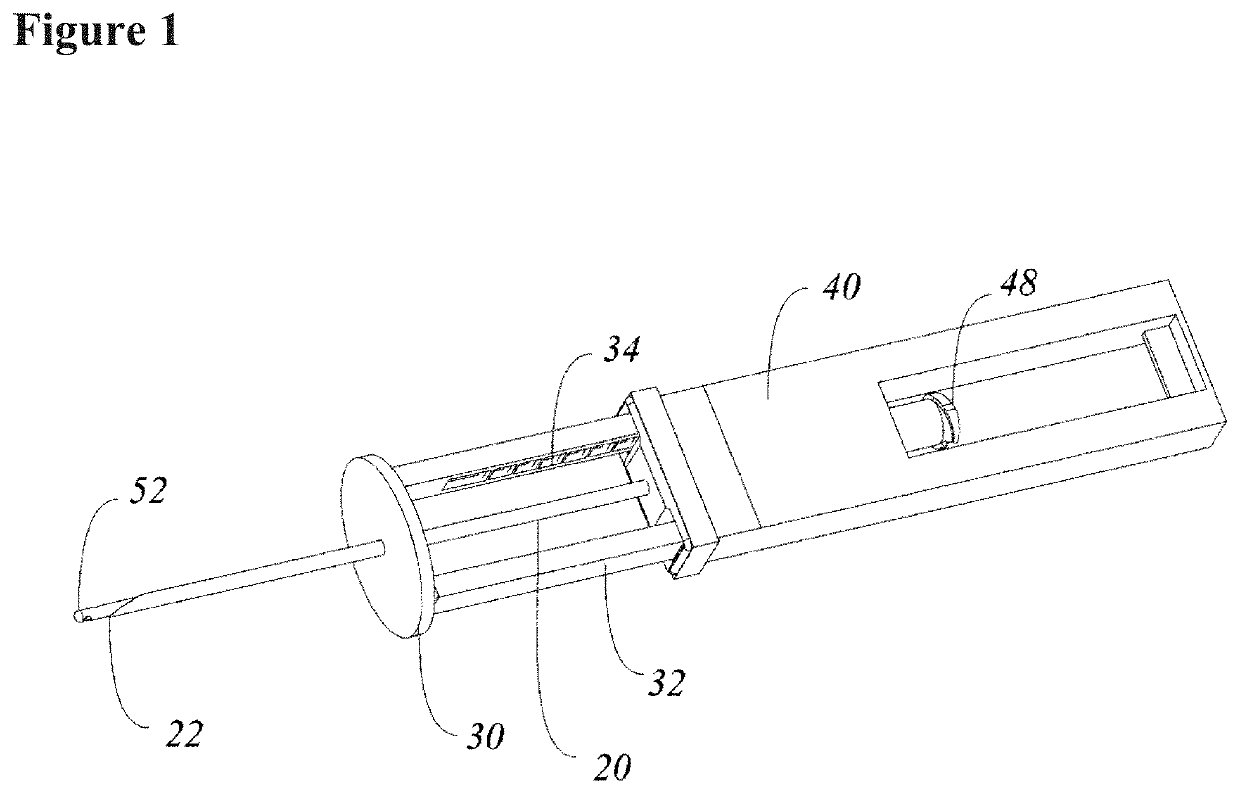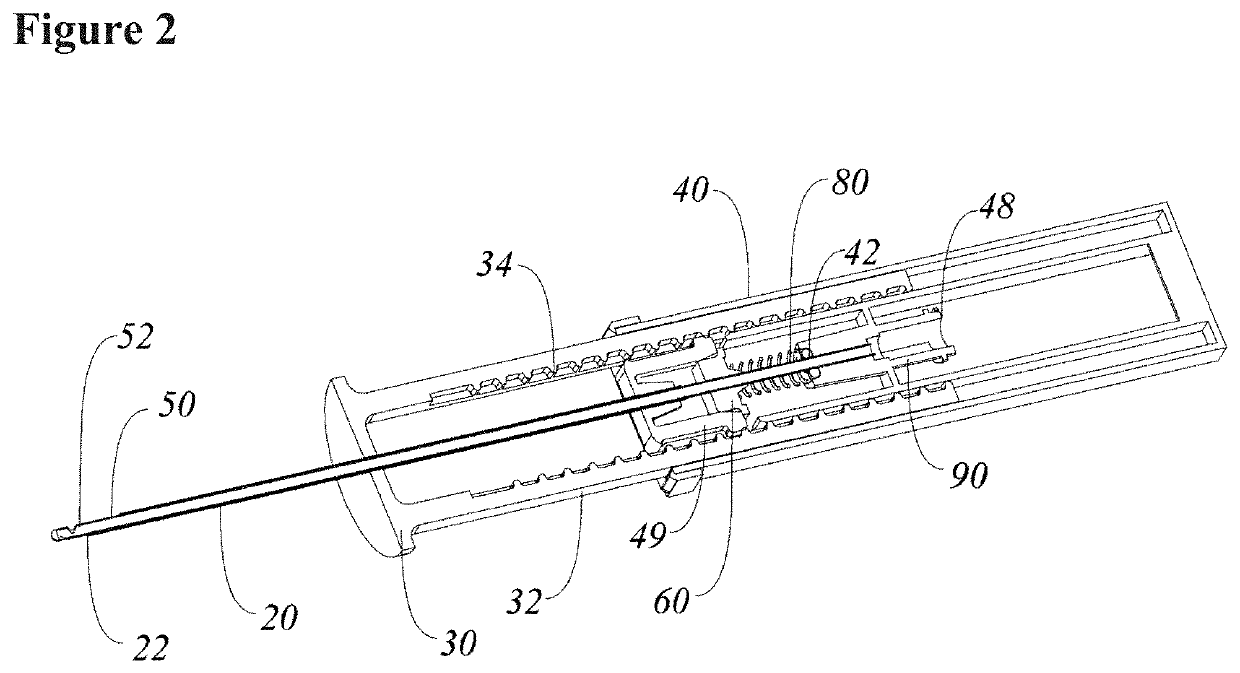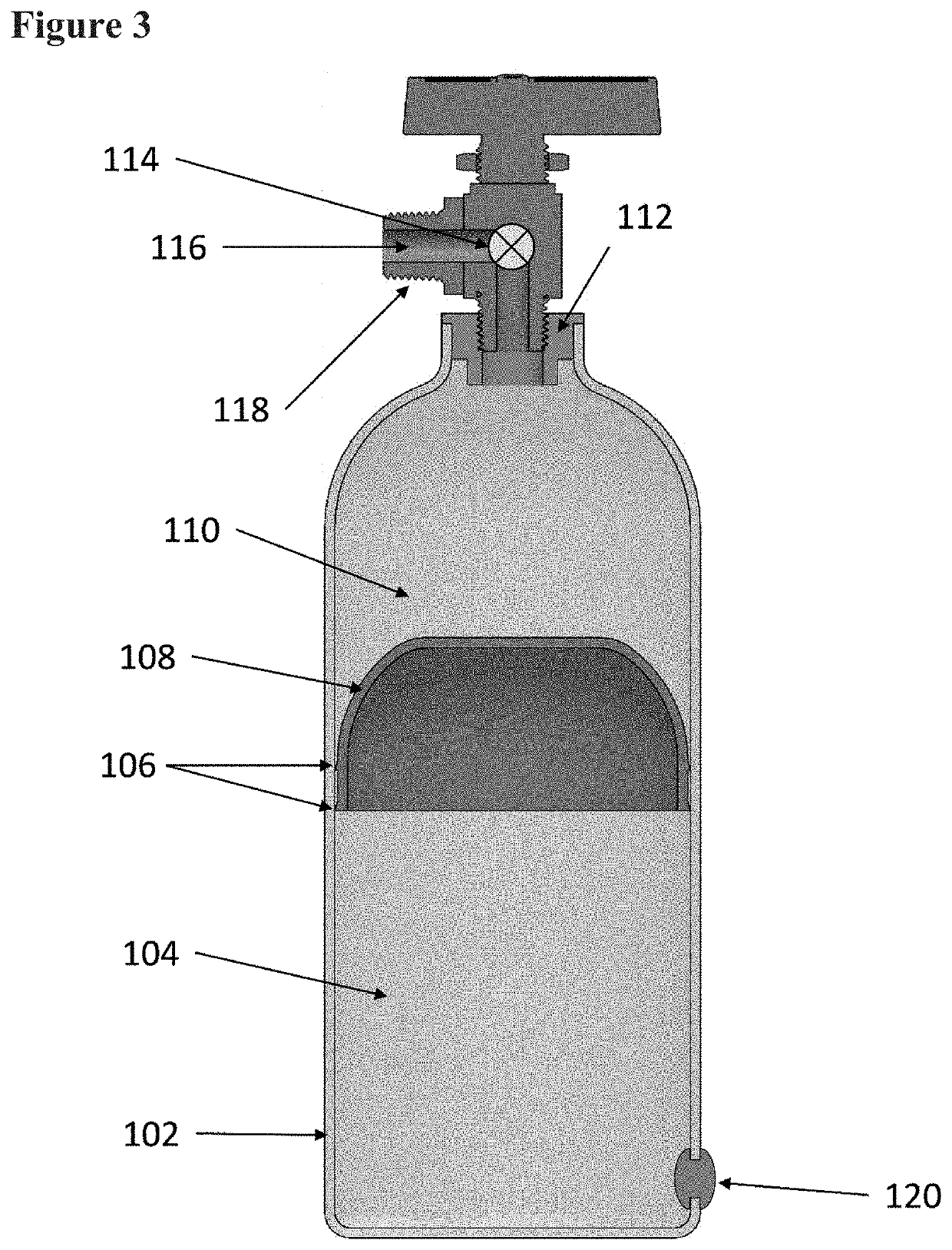Systems and methods relating to medical applications of synthetic polymer formulations
a synthetic polymer and formulation technology, applied in the field of medical applications, can solve the problems of inability to access the abdominal cavity, the system is not ideally set up to inject sponges, and the difficulty of stopping internal bleeding, etc., to achieve the effect of reducing systemic and/or more distal side effects, convenient fitting into a medical field kit, and small siz
- Summary
- Abstract
- Description
- Claims
- Application Information
AI Technical Summary
Benefits of technology
Problems solved by technology
Method used
Image
Examples
example 1
on of Foaming Poloxamer Formulations
[0067]Aqueous solutions of poloxamers P188, P338, and P407 (Pluronic® F68, F108, and F127 respectively) at concentrations from 25% w / w to 45% w / w were blended with from 2.5% to 10% by weight of 1,1,1,2-tetrafluoroethane (aka Norflurane, HFC-134a) in liquid form under pressure using a delivery container with the design illustrated in FIG. 6 and described above. The general method for preparation of every formulation was as follows:
[0068]Preparation of Poloxamer Solutions:
[0069]Reverse osmosis purified water was chilled in a laboratory refrigerator to approximately 4° C. before use. The required mass of chilled water was first weighed into a suitable laboratory pail and the calculated amount of poloxamer was then slowly added to the pail under constant mixing using a high-shear mechanical stirrer. After all the poloxamer had been added, a lid was placed onto the pail and it was transferred to a refrigerator. Periodically, the pail was removed from t...
example 2
Evaluation of Foaming Poloxamer Formulations
[0076]Foam Height Testing:
[0077]The volume and stability of the foam produced by each foaming polymer formulation was assessed using a simple foam height testing apparatus as shown in FIGS. 7A, 7B, and 7C. The apparatus (FIG. 7A) consists of a vertically mounted 120 cm high and 6.06 cm internal diameter clear polycarbonate tube 200. The lower end of the tube is sealed except for a 1 cm diameter input port 202 through which the foam is introduced. The tube contains a piston of negligible mass 204 which seals the tube, but which can move freely up and down. A column of water 206 is layered above the piston, the height of which provides a reproducible and easily measured pressure against the expansion of the foam.
[0078]In use, the delivery container was attached via a flexible tube to the port 202 and the foaming polymer formulation was introduced into the testing apparatus after which the input port was closed (FIG. 7B). The expanding column...
example 3
valuation of Foaming Poloxamer Formulation for Hemostasis
[0094]Based upon the findings in the foregoing examples, a foaming Pluronic F68-based formulation was selected for evaluation as a potential interventional treatment in a porcine model of acute traumatic non-compressible abdominal hemorrhage.
[0095]These following studies were performed using the laparoscopic swine model of non-compressible torso hemorrhage (NCTH) developed by Dr James Ross, as described in “A Laparoscopic Swine Model of Non-Compressible Torso Hemorrhage” James D. Ross Ph D, et al. J Trauma Acute Care Surg, Volume 77, Number 3, Supplement 2, which is hereby incorporated by reference. The laparoscopic approach maintains both the integrity of the peritoneum and the natural tamponade effect of an intact abdominal wall while preserving the intrinsic physiologic responses to hemorrhage and therefore provides a model of NCTH that reflects clinically relevant physiology in trauma and uncontrolled hemorrhage. For splen...
PUM
| Property | Measurement | Unit |
|---|---|---|
| pressure | aaaaa | aaaaa |
| pressure | aaaaa | aaaaa |
| pressure | aaaaa | aaaaa |
Abstract
Description
Claims
Application Information
 Login to View More
Login to View More - R&D
- Intellectual Property
- Life Sciences
- Materials
- Tech Scout
- Unparalleled Data Quality
- Higher Quality Content
- 60% Fewer Hallucinations
Browse by: Latest US Patents, China's latest patents, Technical Efficacy Thesaurus, Application Domain, Technology Topic, Popular Technical Reports.
© 2025 PatSnap. All rights reserved.Legal|Privacy policy|Modern Slavery Act Transparency Statement|Sitemap|About US| Contact US: help@patsnap.com



